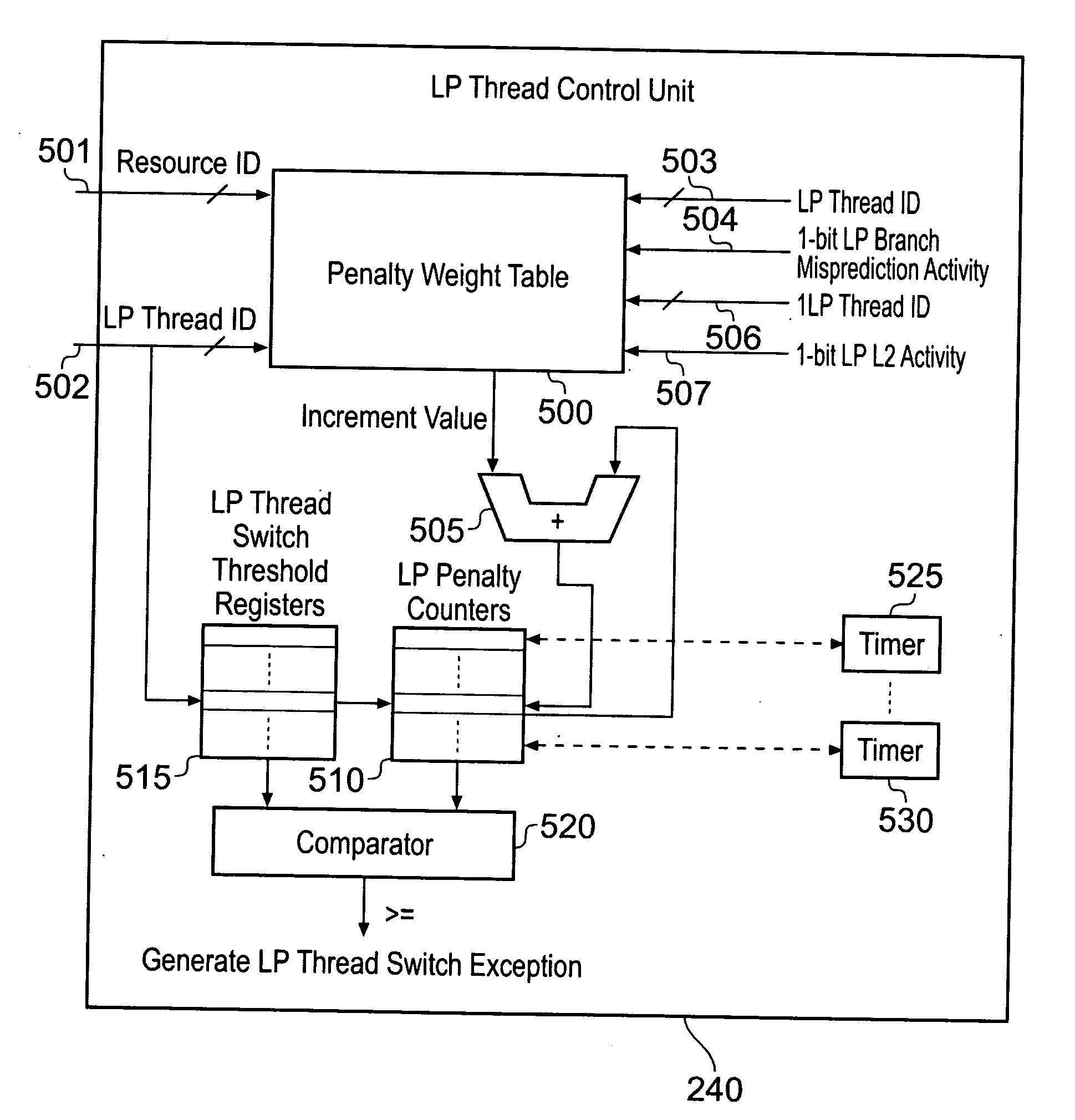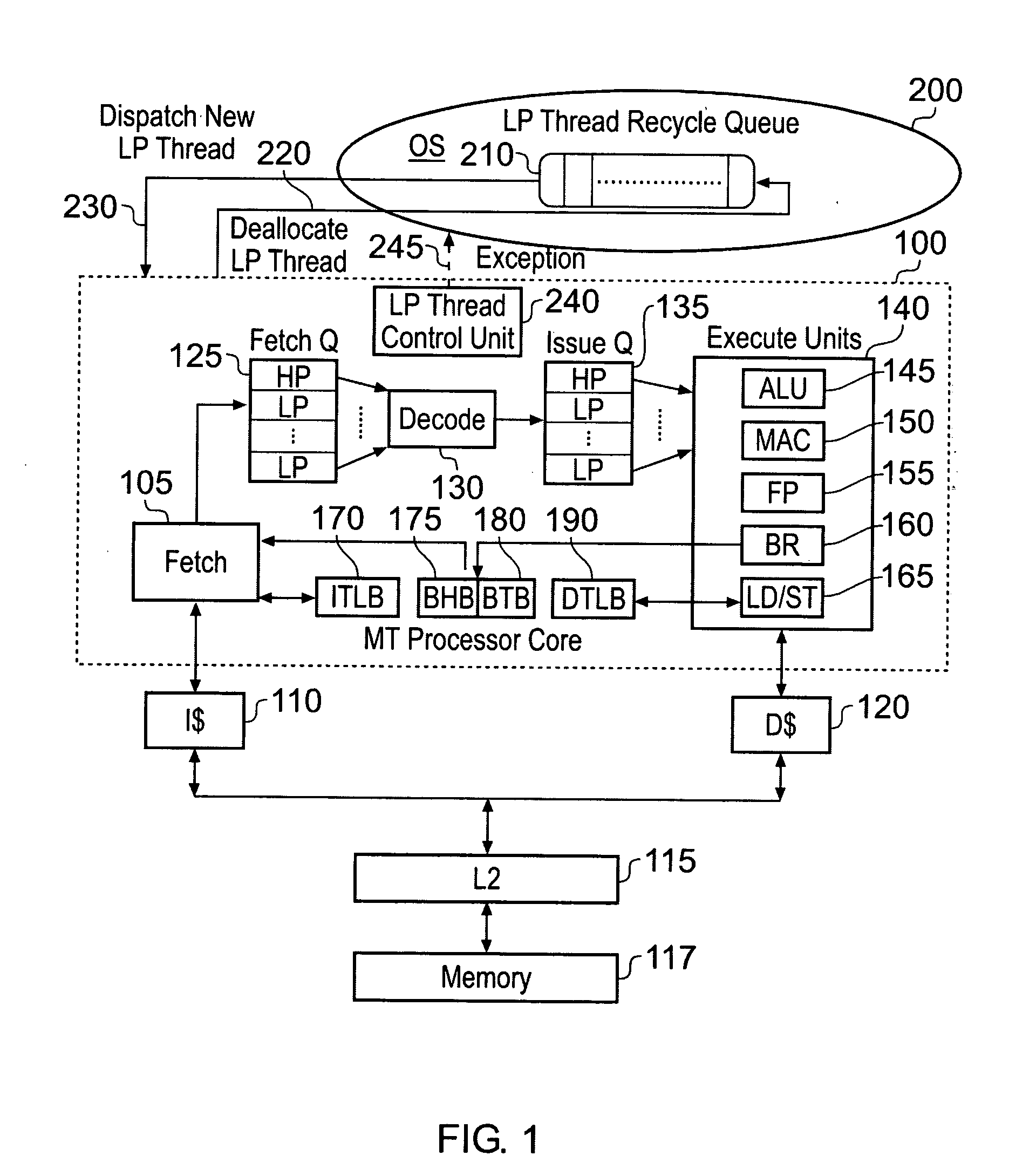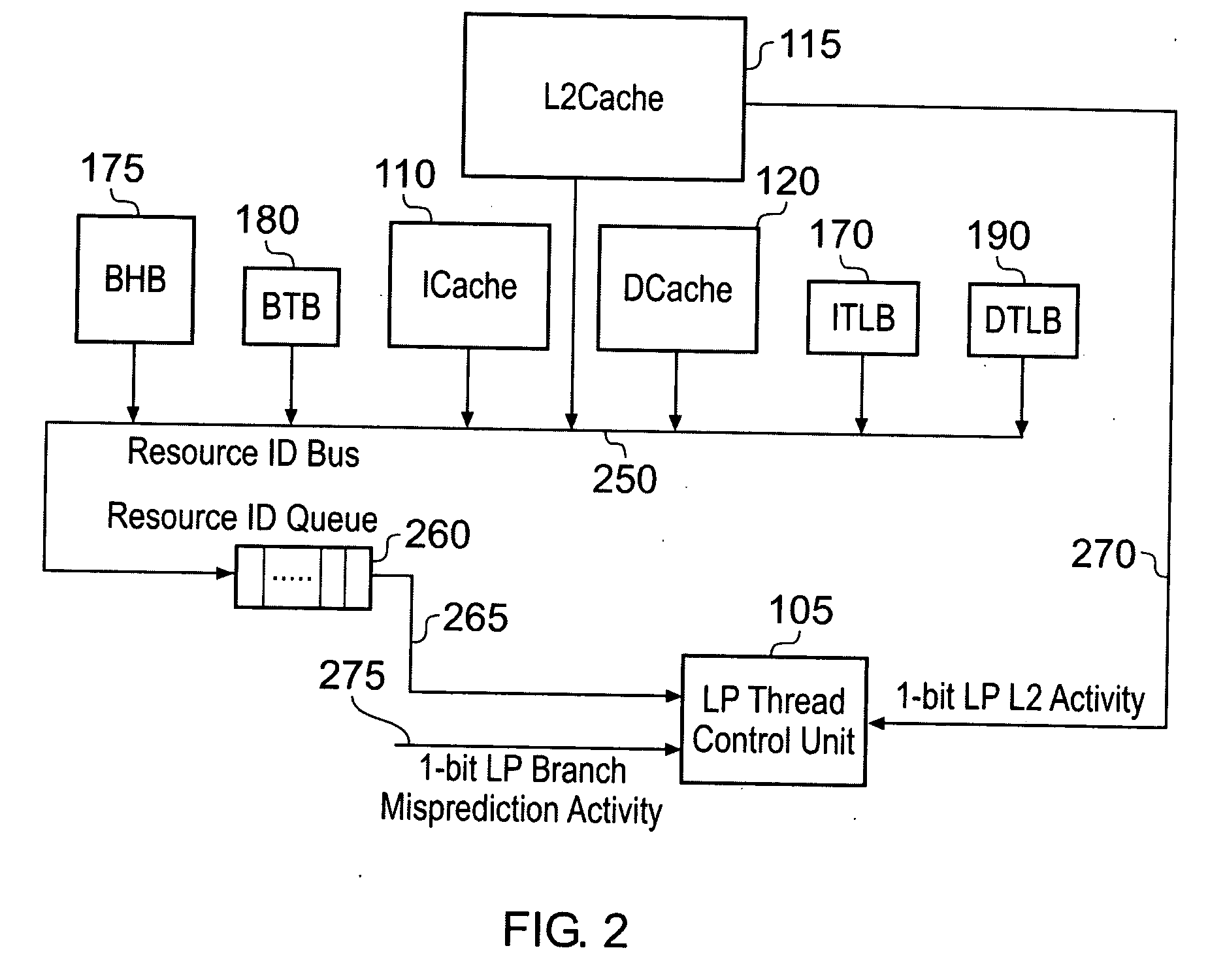[0014]In accordance with the present invention, thread control circuitry is used to detect a condition indicating an adverse effect caused by a lower priority program thread being executing by the processing circuitry and resulting from sharing of the at least one storage unit between the multiple program threads. On detection of that condition, an alert
signal is issued, and the scheduler is responsive to the alert signal to cause execution of the lower priority program thread causing the adverse effect to be temporarily halted. Accordingly, by such an approach, the
operating system does not need to set any objectives for the high priority program thread, and instead the thread control circuitry seeks to reduce certain adverse effects resulting from the sharing of the at least one storage unit by advising the scheduler when a condition indicating such an adverse effect has arisen, so as to cause the lower priority program thread to be temporarily halted. Such an approach provides a simple and effective mechanism for seeking to alleviate such adverse effects, and provides a very flexible solution. For example, the basic operation of the scheduler (typically part of the
operating system) does not need to be altered in order to allow the present invention to be utilised, and there are a number of ways in which the problematic lower priority program thread can be caused to be temporarily halted.
[0016]Hence, whenever the thread control circuitry detects that a particular lower priority program thread is giving rise to an adverse effect, such as for example by adversely affecting the performance of the high priority program thread through its interference with content of the high priority program thread stored in the at least one storage unit, or because the lower priority program thread is giving rise to adverse
energy consumption, then the mechanism of the above described embodiment causes an alternative lower priority program thread to be scheduled in place of that offending lower priority program thread in the expectation that this newly allocated lower priority program thread may execute more co-operatively in combination with the high priority program thread. Hence, by such embodiments, the at least one high priority program thread is allowed to progress as much as possible, but at the same time the overall processor
throughput is improved by seeking to schedule co-operative lower priority program threads that can shared the at least one storage unit with the high priority program thread without giving rise to such adverse effects.
[0034]In one embodiment, the data processing apparatus further comprises: a
timer storage which is set on issuance of said alert signal to begin counting
clock cycles, and is reset on allocation of one of the additional lower priority program threads; if the
timer storage counts a specified number of
clock cycles without the lower priority program thread being deallocated, the counter is reset and the processing circuitry is arranged to resume execution of that lower priority program thread. Hence, this provides a mechanism whereby execution of the lower priority program thread can be resumed if no re-allocation is performed by the scheduler within a specified number of
clock cycles, again the counter being reset prior to execution of that lower priority program thread being resumed.
[0036]In one embodiment, the processing circuitry may be arranged to execute a single high priority program thread and a single lower priority program thread at any particular point in time, and following issuance of the alert signal the currently executing lower priority program thread can be de-allocated and another lower priority program thread allocated in its place. However, in an alternative embodiment said processing circuitry executes multiple lower priority program threads, each adverse event signal identifies the lower priority program thread that it is associated with, and said thread control circuitry has a separate counter for each lower priority program thread, when issuing an alert signal said thread control circuitry indicating which lower priority program thread it relates to. Hence, the thread control circuitry can separately keep track of adverse effects caused by each of the executing lower priority program threads, and when issuing an alert signal will identify which lower priority program thread that alert signal relates to, to allow the scheduler to temporarily halt execution of the appropriate lower priority program thread.
[0037]Whilst the same threshold value may be associated with all of the lower priority program threads, in one embodiment the threshold storage stores a separate threshold value for each of the multiple lower priority program threads. This provides a great deal of flexibility, since it allows a higher level of interference by some lower priority program threads to be tolerated than is tolerated for other lower priority program threads, and hence threshold values can be established having regard to the perceived importance of the various tasks performed by the various lower priority program threads.
 Login to View More
Login to View More  Login to View More
Login to View More 


